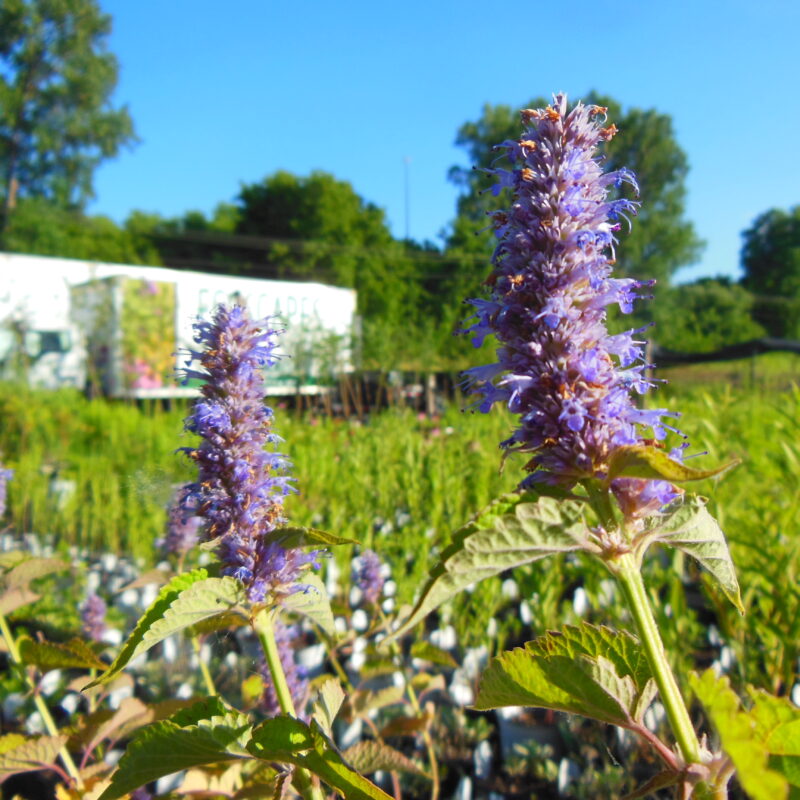Anise HyssopAgastache foeniculum
a.k.a. Fragrant Hyssop
One of the more ornamental and larger of our native mints. Giant hyssop grows well in gardens and produces excellent cut flowers. Will work well in shallow rain gardens and upland buffers. It self-seeds readily and may spread in gardens.
USDA symbol: AGFO
General Information
| Plant Type | Forb |
|---|---|
| Height | 4 feet |
| Light Exposure | Sun, Part Sun |
| Soil Moisture | Dry |
| Bloom Color | Purple |

Tolerances
| Flooding / Inundation Tolerance | Moderate |
|---|---|
| General Resilience | 7 |
| Salt Tolerance | Medium |
| Stress Tolerance | General Disturbance |
Pollinator Value: Very High
| Bloom Months | July to September |
|---|---|
| Larval Host of | Moths |
| Specific Pollinators Hosted | Lintneria eremitus |
| Pollinator Benefit | Insect Pollinated, Provides Nectar, Stem Nesting |
Project Planning
| Project Type | Boulevard, Rain Garden, Sandy or Engineered Soils, Shoreline Buffer, Upland Buffer |
|---|---|
| Coefficient of Conservatism | 5 |
| Herbivore Sensitivity | Low |
| Lifespan | Perennial |
| Rate of Spread | Slow |
| Soil Stabilization | Deep |
| Vegetative Reproduction | Clonal |
Range
| County | Aitkin, Anoka, Becker, Beltrami, Benton, Big Stone, Blue Earth, Brown, Carlton, Carver, Cass, Chippewa, Chisago, Clay, Clearwater, Cook, Cottonwood, Crow Wing, Dakota, Dodge, Douglas, Goodhue, Grant, Hennepin, Hubbard, Isanti, Itasca, Kandiyohi, Kittson, Koochiching, Lake, Lake of the Woods, Le Sueur, Mahnomen, Marshall, Meeker, Mille Lacs, Morrison, Nicollet, Nobles, Norman, Otter Tail, Pennington, Pine, Pipestone, Polk, Pope, Ramsey, Roseau, Sherburne, St. Louis, Stearns, Todd, Wadena, Washington, Winona, Wright |
|---|---|
| Ecoregion | Driftless Area, Lake Agassiz Plain, North Central Hardwood Forests, Northern Glaciated Plains, Northern Lakes and Forests, Northern Minnesota Wetlands, Western Cornbelt Plains |
| Approximate Eco Province | Eastern Broadleaf Forest, Laurentian Mixed Forest, Prairie Parkland, Tallgrass Aspen Parklands |
